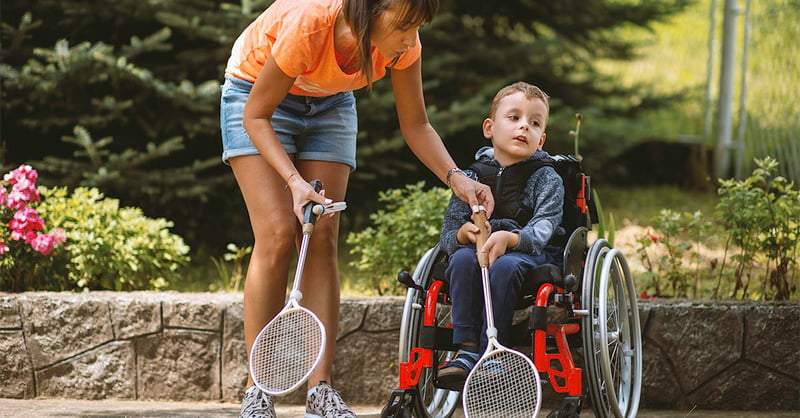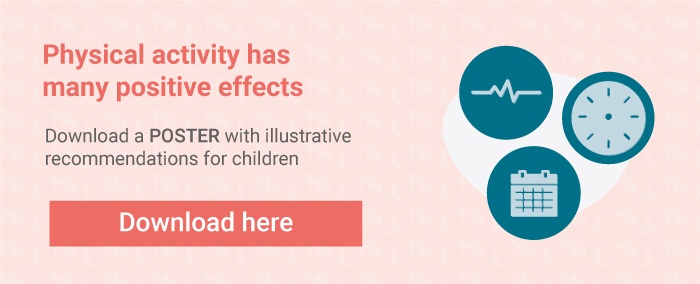What are neuromuscular diseases?


The term neuromuscular diseases refer to a broad category of disorders that affect the muscles due to problems with the nerves and muscles in the body. They impact normal function and results in muscle wasting, weakness, and impaired co-ordination.
In this article you can read more about:
- What is a neuromuscular disease?
- What are the symptoms of neuromuscular diseases?
- What causes muscular diseases?
- What are the most common muscular diseases?
- How are neuromuscular diseases diagnosed?
- Are neuromuscular diseases curable?
What is a neuromuscular disease?
Neuromuscular diseases affect voluntary muscles in the body because of problems with the communication between the brain, nerves and muscles. Nerve cells, also called neurons, send and receive electrical messages between the muscles and the brain. When these neurons are affected by a disease, the communication between the muscles and the brain does not work as intended.
What are the symptoms of neuromuscular diseases?
The most common signs of neuromuscular diseases are:
- Muscle weakness
- Muscle wastage
- Muscular cramps or spasticity
- Muscle pain
Since the muscles are affected, a person’s ability to move, breathe and swallow can also be impaired. The level of impairment depends on the type and severity of the disease.
What causes neuromuscular diseases?
There are several different types of neuromuscular diseases, and the reduced muscle function can have various causes.
Causes of neuromuscular diseases can be direct, such as a muscle disease (myopathy), or indirect, such as a disease in the nerve that stimulates the muscle (polyneuropathy) or in the connection between the nerve and the muscle.
In some cases, the condition is congenital or is onset in early childhood, while in other cases, the first symptoms may appear in adulthood. Different conditions can have completely different outlooks, and in many, but not all, neuromuscular disorders, there is a progression of symptoms over time.
The manifestation of the disease can differ among individuals with the same diagnosis, and there can be varying degrees of disability among individuals with the same condition within the same family.
What are the most common neuromuscular diseases?
There are several different neuromuscular diseases, but the most common neuromuscular diseases with severe outcomes are:
- Duchenne Muscular Dystrophy (DMD)
- Becker Muscular Dystrophy (BMD)
- Spinal muscular atrophy (SMA)
- Amyotrophic lateral sclerosis (ALS)
Muscular dystrophy
Muscle dystrophies are a group of muscle diseases caused by a mutation in genes. Duchenne and Beckers are two types of muscle dystrophies caused by a genetic mutation in the dystrophin gene (DMD gene), which is located on the X chromosome (Xp21.2). The mutation results in a lack of production of the protein dystrophin, which is necessary for the structure of muscle cells. This will over time lead to a progressive destruction of muscle cells and cause muscle weakness.
/Niels_eng.png?width=800&height=419&name=Niels_eng.png)
Numerous different mutations have been identified in the DMD gene, which is a very large gene. Severe mutations will result in Duchenne muscular dystrophy, while mutations that affect dystrophin production to a lesser degree will lead to the milder disease variant Becker muscular dystrophy.
Mutation in the dystrophin gene (DMD) is X-linked. This means that boys who have this mutation on their X chromosome will develop the disease. Girls have a healthy X chromosome in addition and therefore do not develop the severe form of the disease. However, they will carry the mutation. Approximately 10 percent of female carriers may still experience mild symptoms of muscle disease.
Women who carry the mutated copy of the gene have a 50 percent chance of passing it on with each pregnancy. If she has a boy there is 50 percent chance that he will have DMD. If she has a girl, there is a corresponding 50 percent risk that the girl will become a carrier of the mutation without being affected by the disease herself.
Read more: What is Duchenne Muscular Dystrophy?
Spinal muscular atrophy
Spinal muscular atrophy is a genetic disorder characterized by muscle weakness and muscle wasting. The gene affected in SMA is the “survival motor neuron” gene (SMN1). A healthy SMN1 gene produces a specific kind of protein which is needed to maintain the health and normal function of motor neurons. Motor neurons are the nerves that send signals to the muscles from the brain. A child with SMA has a defect on the SMN1 gene which causes limited protein production. As a result, the nerves break down and can’t send signals to the muscles. The muscles cannot move and will become weaker and smaller.
/Sophia_Featureimage.jpg?width=800&height=419&name=Sophia_Featureimage.jpg)
Since SMA is a disease passed down through families, both parents (in most cases) must carry the defected SMN1 gene for a child to have the condition. If a child only gets a broken SMN1 gene from one parent, the child will most likely not get SMA but can be a carrier of the disease.
Read more: What is Spinal Muscular Atrophy (SMA)?
Amyotrophic lateral sclerosis (ALS)
Amyotrophic lateral sclerosis is a rare progressive neurodegenerative disease affecting motor neurons in the brain and spinal cord. The term ‘progressive’ means that symptoms get worse over time and lead to muscle wasting and weakness. 90-95 % of ALS cases are considered to be sporadic, occurring at random with no clearly associated risk factors and no family history of the disease. Genetic ALS, also called familial ALS, happens in 5-10% of cases, and is inherited by one or both parents.
Symptoms of ALS are most commonly developed between the ages of 55-75.
How are neuromuscular diseases diagnosed?
Clinical and neurological examination will be the basis for diagnosing a neuromuscular disease. A doctor will need information such as:
- When did the symptoms start?
- What are the symptoms?
- How have the symptoms developed?
- How pronounced are the symptoms?
A medical professional will also map family history to understand if other relatives have or have had similar symptoms or other diseases.
During the examination the physician will observer the patient's movement patten and muscles, to reveal the presence and locations of for example atrophies or muscular hypertrophies. Manual muscle testing will be carried out to identify weakness.
In addition, blood samples, muscle biopsies, electromyography (EMG), Magnetic resonance imaging (MRI), Lumbar puncture and genetic testing will be conducted.
Are neuromuscular diseases curable?
Currently there are no known cures for neuromuscular diseases, but new treatments have recently been developed that can delay disease progression in some conditions, in particular for SMA, with the new available medication showing great outcomes. Some of the most important types of treatment that are available for this disease include Nusinersen (Spinraza), Onasemnogene abeparvovec-xioi (Zolgensma) and Evrysdi (Risdiplam).
For other neuromuscular diseases, the main focus of treatment is on managing the condition and making quality of life as good as possible. Treatment interventions include medication, physical therapy and sometimes surgery.

Rikke Damkjær Moen brings many years of experience as clinical physiotherapist to the Made for Movement team. Her mission is to ensure that everybody, regardless of mobility problems, should be able to experience the joy and health benefits of physical activity. As our Medical Manager, Rikke is passionate about sharing knowledge so that individuals with special needs, families, and clinicians can discover the possibilities and solutions provided by Made for Movement.
The Innowalk Pro is an excellent end-effector device, providing full-body robotic therapy in standing with weight-bearing. It can be...
Jack Torbett, a paediatric physiotherapist from the Great North Children’s Hospital conducted a small in-service project looking at...
Made for Movement was enthusiastically present at the Rehab Day in Lund, Sweden, February 5th. The topic was “Research within SMA,...
Hear from us from time to time and learn new things
